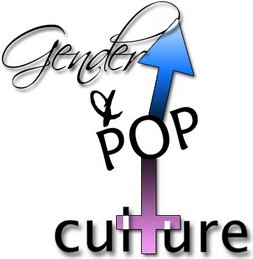In the reality television show, “The Girls Next Door,” some of society’s ideals about masculinity and femininity are portrayed through the different characters, especially in Season 2’s first episode, which was about Hugh Hefner’s birthday. Hugh Hefner is the main male character on the show and is therefore depicted as the normative for men. He has three girlfriends, Bridget, Holly, and Kendra. Although these girls are different, they have many similarities which are shown as what the ideal woman should be.
Bridget and Holly are two of the main characters in “The Girls Next Door.” They both have long blond hair and are in shape. Although they are both physically fit, they are concerned with their weight and one of them goes on a diet to make sure she stays skinny for her striptease for Hugh Hefner’s birthday present. These girls are never seen doing anything intellectual and their hardest task of this episode was to figure out what to get Hugh Hefner for his birthday.
Kendra is Hugh Hefner’s other girlfriend. She is the sportiest of Hugh Hefner’s three girlfriends. She is the more active one and she also likes to party a lot. Kendra differs from the other girls in this regard, but she also shares many of their attributes. Thin with long blond hair, Hugh Hefner’s three girlfriends portray the image of the ideal girl. Not all girls are naturally born with this look, but many of them still strive to be like this. In the article “Inventing the Cosmo Girl: Class Identity and Girl-Style American Dreams,” the author, Laurie Ouellette, says “”new looks” created with wigs, false eyelashes, tinted contact lenses, fake beauty spots, false toenails, false fingernails, nose surgery, padded bras, false derrieres, and fake jewelry were recommended.”[1] This magazine gives girls ways to become like the “ideal” girl, like the girls in “The Girls Next Door.”
In “The Girls Next Door,” Hugh Hefner is depicted as the ultimate man. He has three girls, is the head of a major company, and is very wealthy. In this episode he threw a huge party with many celebrities and girls. This show portrays Hugh Hefner as the “ideal” man and as a result of this; many men and boys want to be just like him. My friend’s younger brother watched this show once and he wanted to be just like Hugh Hefner because of his wealth and the mansion.
“The Girls Next Door” television program influences people’s views on femininity and masculinity. Hugh Hefner and his three girlfriends, Bridget, Holly, and Kendra, come together in a form of a kind of “family.” The characters in “The Girl Next Door” show to society what the ideal man and women are; how they look and act. The different girls portray slightly different, but very similar ideas on femininity and the main male character, Hugh Hefner, displays normative definitions of masculinity.
[1] Laurie Ouellette, “Inventing the Cosmo Girl: Class Identity and Girl-Style American Dreams,” Gender, Race, and Class in Media, ed. Gail Dines and Jean M. Humez (United States, 2003) 121.
Subscribe to:
Post Comments (Atom)


2 comments:
99% of american men have wanted to be hugh hefner for the past 50 years
I completely agree with your assertion that the three girls each portray variations of the various feminine ideals in contemporary US culture; however, I wouldn't say that their relationship with Hef or the role he plays is that of a societal norm. You write, `Hugh Hefner is the main male character on the show and is therefore depicted as the normative for men.` However, just because he's the only male-character, he's not necessarily the ideal. His on-screen portrayal strikes me as completely a-typical and not at all the norm...age, polyamorous relationships, wealth, public sexuality, choice of pj attire :o), etc (think of any `hot` actors, male models, etc...then, think Hef...is he the normative ideal ?).
I think that you have a great start for an analysis of femininity (which would have been perfectly fine for this assignment) that could have been a little more focused and to the point. The use of Ouellette's quote was a bit confusing considering the quote references the historical moment at (the birth of an ideal) that is far removed from the context of the show. Perhaps you could expand on a quote like this (if the quote was one that was relevant but needed some extra clarity from you as the author to make it 'work') to connect the historical moment in the quote to the present day. You're quite right that women aren't born looking like the three women on the TV show. However, they've had some rather invasive procedures to look as they do (padded tush just can't compete with surgical interventions and silicone!). What does the intensity of the means to attain this idealized beauty say about the evolution of social norms?
I also like the idea of family between the three women that you articulate towards the end of the post. This issue is a very interesting one because it challenges familial norms in a completely different way than their relationships with Hef challenges them.
Perhaps narrowing your focus (b/c you make some great assertions in this piece) and sticking with that focus would be best for your next post.
Post a Comment